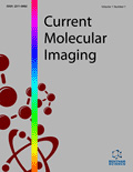Abstract
Background: Evaluation of focal liver injury is an important obstacle facing precise liver surgery. We investigated for a correlation between the average ADC of the whole liver and serum liver function tests, and also sought to determine a diagnostic ADC threshold for diagnosing liver injury.
Materials and Methods: Diffusion weighted imaging (DWI) and liver function tests were performed on 24 patients with common bile duct (CBD) stones and 20 normal control volunteers. Statistical analyses including Spearman correlation analysis and ROC analysis were performed to determine the ability for the apparent diffusion coefficient (ADC) to predict focal liver injury.
Results: The average ADC value of control and CBD stones groups were 1378±93mm2/s and 1084±190mm2/s. The ADC value significantly correlated with serum liver function tests including total bilirubin, direct bilirubin, γ- glutamyltransferase, and alkaline phosphatase measurements (r=-0.573,-0.528,-0.549, and -0.595, P < 0.001). ROC analysis of ADC as a predictor for focal abnormal liver function was performed using a reference standard of serum liver functional tests (1990 Council for International Organizations of Medical Sciences) and demonstrated an area under the curve (AUC) of 0.946. Using an ADC of 1249mm2/s as the threshold value, sensitivity was 79.2% (95%CI 57.8-92.9%) and specificity was 100% (95%CI 83.2-100.0%).
Conclusion: Noninvasive diffusion weighted imaging is able to identify focal hepatocellular injury from biliary obstruction.
Keywords: Apparent diffusion coefficient, common bile duct stones, diffusion weighted imaging, focal liver injury, functional imaging, magnetic resonance imaging, ROC, sensitivity and specificity.
Graphical Abstract
 7
7

